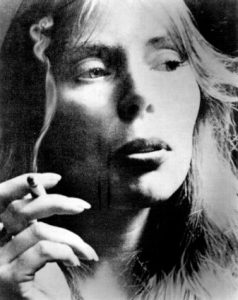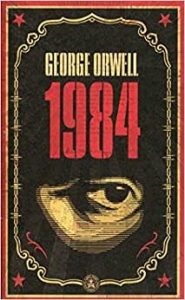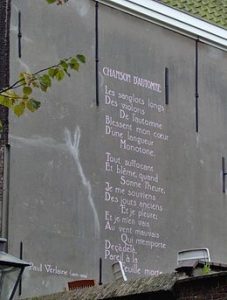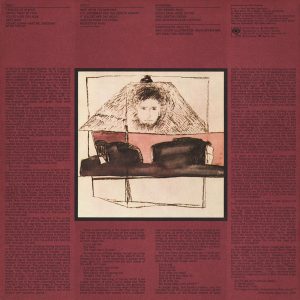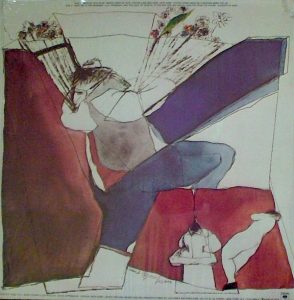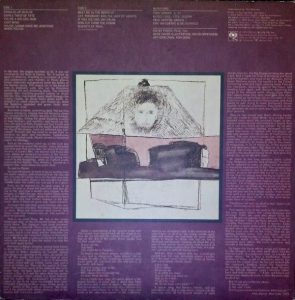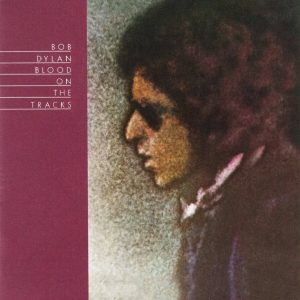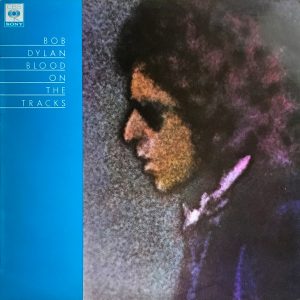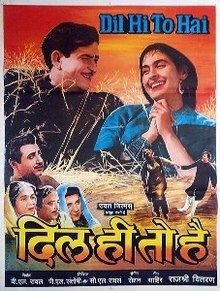- NET 1998 Part 1: One who sings with his tongue on fire.
- NET 1998 Part 2: Friends and other strangers
- NET 1998, part 3, What’s a Protest Song?
The complete Never Ending Tour index
By Mike Johnson (Kiwipoet)
During 1998, Dylan shared the stage with other performers, notably Van Morrison, Mick Jagger and Joni Mitchell. Dylan’s performances with others can be quite fun to watch, but rarely does Dylan do his best work on those occasions.
This scrappy ‘Just Like a Rolling Stone’ with Mick Jagger is a good example. Jagger jumps around plausibly, trying to look like one of those ‘British bad boys’ Dylan mentions in ‘I Contain Multitudes’. Dylan tries to hunker down into the song but Jagger doesn’t know the words. He can however belt out the chorus in fine style. Just like a Rolling Stone? You bet. As I said, fun to watch…
Dylan also did some shows where he was the opening act for Van Morrison. Van the Man was riding pretty high in those days. Occasionally they would join each other for a duet. Here Dylan and Van have a fair go at ‘Knocking on Heaven’s Door’. There’s a nice impromptu moment when master harpist Dylan finds a harmonica for Van to have a blast.
The two of them seem to enjoy themselves singing Van’s ‘More and More’. The grin on Dylan’s face in the last verse gives the game away.
Joni Mitchell joins Van and Bob for a rather moving performance of ‘I Shall Be Released’. It’s nicely impromptu, with each pointing to the other for taking the next verse. It’s great to see these three poets of rock music onstage together.
But, as I said, Dylan usually does his best work alone. Let’s pick up on ‘I and I’, a song Dylan has been cultivating since the heavy, thunderous versions he did with Tom Petty in 1986. My peak performance of the song remains the 1993, guitar heavy version (See NET, 1993, Part 1), but this 1998 performance comes a very close second. The song is slowly disappearing from Dylan’s setlists by this time, but the power of the song is undiminished, as is Dylan’s commitment to it. (1st July)
I and I
‘I’ll Be Your Baby Tonight’ and ‘To Be Alone With You’ are both in a lighter vein than the Time out of Mind songs, and ‘Blind Willie McTell’, ‘Silvio’ and ‘This Wheel’s on Fire’, songs Dylan brought forward to sit alongside the album songs.
One of the most laid back Dylan songs of the sixties must be ‘I’ll Be Your Baby Tonight’, the last track on John Wesley Harding(1967), which was stylistically a taste of what was to come in Nashville Skyline a couple of years later. The lyrics are deliberately goofy.
‘Well, that mockingbird's gonna sail away We're gonna forget it That big, fat moon is gonna shine like a spoon But we're gonna let it You won't regret it’
‘I’ll Be Your Baby Tonight’ is a warm song, and his jokes at love’s expense are gentle rather than sharp. It is, after all, an invitation to love, a night of boozy love by the sound of it. (14th January)
I’ll be your baby tonight
Another from Nashville Skyline (1969) that Dylan picks up on from time to time is the bouncy ‘To Be Alone With You’. He relishes these lines:
‘It only goes to show That while life's pleasures be few The only one I know Is when I'm alone with you’
and I can’t help thinking that the ‘you’ in the verse is the audience, even if that was not his intention when writing the song.
To be alone with you
‘Tonight I’ll Be Staying Here With You’ also from Nashville Skyline, is in the same vein, only a touch more melancholy. I like the 1975 lyric change, ‘Throw my ticket in the wind’, but in this 1998 performance we get the original lyrics with the implied tiredness of the song beautifully rendered in Dylan’s cracked, aged voice. That voice reminds us that Dylan is now a rich old man, and not the poor kid who wrote ‘Only a Hobo’. These lines take on a special resonance because of that.
‘I can hear that whistle blowin’ I see that stationmaster, too If there’s a poor boy on the street Then let him have my seat ’Cause tonight I’ll be staying here with you’
That ‘poor boy on the street’ might have been Bob in the winter of 1962.
Tonight I’ll be staying here with you
That pretty much does it for lightening up the mood, the dark, sombre mood of Time out of Mind. ‘Born in Time’ (from Under The Red Sky, 1991) fits so perfectly into that mood it could have come from the later album. This song has always been a favourite of mine. Although the frailty and contingency of love might be Dylan’s overriding theme, to my mind it was never done with such delicacy of feeling.
‘In the lonely night In the blinking stardust of a pale blue light You're comin' through to me in black and white When we were made of dreams. You're blowing down the shaky street You're hearing my heart beat In the record breaking heat Where we were born in time.’
In keeping with the high quality of these 1998 performances, this is a particularly lush version of the song.
Born in time
Talk about the frailty and contingent nature of love! ‘A Simple Twist of Fate’, with its elusive sub-textual narrative, says it all. We noted before how Dylan plays around with the pronouns in the song. In this version, the main character is the woman. The fact that it still works as well as the original, male centred narrative, demonstrates the equality of the sexes when it comes to regret and desire. The fact that the song sounds just as natural featuring a woman may be Dylan’s point in playing with the pronouns in this way. In this version he sings:
‘They sat together in the park As the evening sky grew dark. She looked at him and she felt a spark Tingle to her bones. 'Twas then she felt alone And wished that she'd gone straight And watched out for a simple twist of fate.’
It works for me, especially in this slow, thoughtful version.
Simple twist of fate
‘My Back Pages’ (1964) was starting to fade from Dylan’s setlists, and this performance doesn’t add much in terms of innovation, or interesting arrangements. Still, it’s nice to hear a rare harp intro, and the solid acoustic performance. (23rd October). If you don’t know the lyrics of the song, it’s a good idea to check them out, for there are some interesting complexities. I note how Dylan’s love life somehow becomes a part of the changes he describes:
‘Girls' faces formed the forward path from phony jealousy To memorizing politics of ancient history’
‘Phony jealousy’ becomes entangled in morally rigid politics. To be free from the latter means being free from the former. Faithfulness to an ideology gets tangled with faithfulness in personal relationships. Again:
‘"Equality", I spoke the word as if a wedding vow Ah, but I was so much older then, I'm younger than that now’
My back Pages
Seen through this lens, ‘It Ain’t Me Babe’ flows naturally from ‘My Back Pages’.
‘You say you're lookin' for someone Who will promise never to part Someone to close his eyes for you Someone to close his heart Someone who will die for you and more’
He could be addressing these words to the ‘corpse evangelist’ of ‘My Back Pages’. Again, there’s nothing too special about this performance, which has a rough, acoustic feel to it.
It Ain’t Me babe
‘Don’t Think Twice’ doesn’t come from the same place, more like the ‘restless hungry feeling/that don’t do no one no good’ from ‘One Too Many Mornings’. I quoted some of the lyrics of ‘Don’t Think Twice’ to my wife who commented that it sounds cruel. I think that is an aspect of the song; the indifference you need to cultivate to keep moving on has its cruel side. But here it’s an indifference touched with tenderness and regret. It’s no fun being ‘on the dark side of the road’. The song is best performed in a jaunty manner, as is this one from 20th February. I like the performance but the rowdy audience is a bit intrusive.
Don’t think twice
Still in the acoustic vein, we have another old friend, ‘Girl From the North Country,’ a song animated by a gentle and loving nostalgia. It doesn’t have the bitter edge of ‘If You See Her Say Hello’.
Girl from the north country
There’s not much loving nostalgia in ‘You’re a Big Girl Now’, either. Just the pain of the thought of what the woman in question might be doing without him. It’s a fine way to torture yourself, imagining your lover ‘in somebody’s room’. Sometimes the ‘dark side of the road’ can be very dark indeed. Dylan does a fine vocal here, but to my ear the performance is compromised by Dylan’s determinedly ‘off key’ guitar playing. I’ve mentioned Mr Guitar Man’s disconcerting style before, and it certainly comes to the fore in this version. Maybe he doesn’t want the sound to become too sweet. Your call, dear reader.
You’re a big girl now
Mr Guitar Man is less of a bother in this ‘Senor,’ and except for some upsinging, it’s a raw and powerful performance of the song. Whenever I hear this song I imagine a seedy canteen or bar near the Mexican border somewhere, some lonely end of the world place where you might forget what it is you’re waiting for, and you have to surrender to your gypsy fate.
Senor
The words that keep coming to mind to describe Dylan’s performances in 1998 are rough and raw. Dylan never allows the performances to become smooth, easy listening. Others can do that with his songs, often to the songs’ detriment. For Dylan, the experiences conveyed in the songs are never smoothed over or homogenised. The emotional edges are ragged, as the sound can be, often more so than the album versions, and Mr Guitar Man’s insistent dissonances never allow us to let our guard down.
So that’s it for 1998, folks, a big year, 117 shows, and there is another big, to my mind, better year coming up – 1999, on the edge of the millennium. We’ll catch you then.
Kia Ora
If you would like to read more, Untold Dylan also has a very active Facebook group: Untold Dylan.
If you would like to see some of our series they are listed under the picture at the top of the page, and the most recent entries can be found on the home page.
If you would like to contribute an article please drop a line to Tony@schools.co.uk

